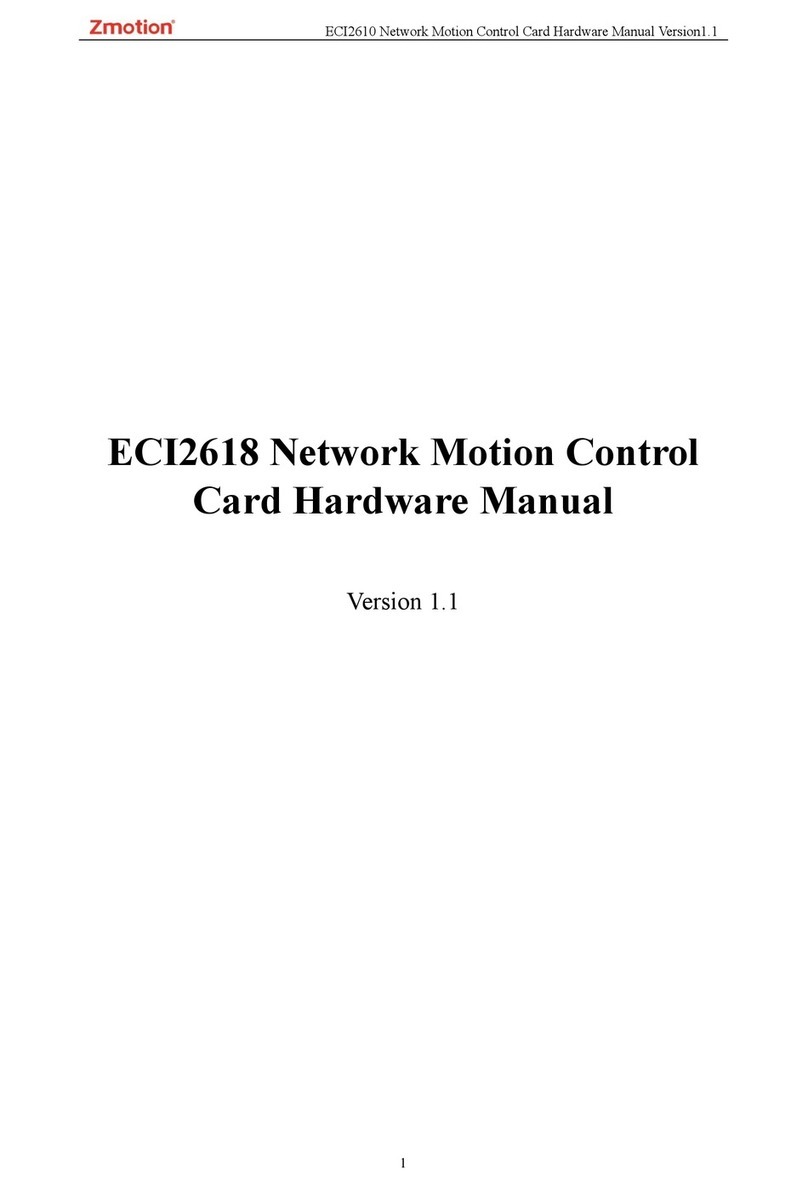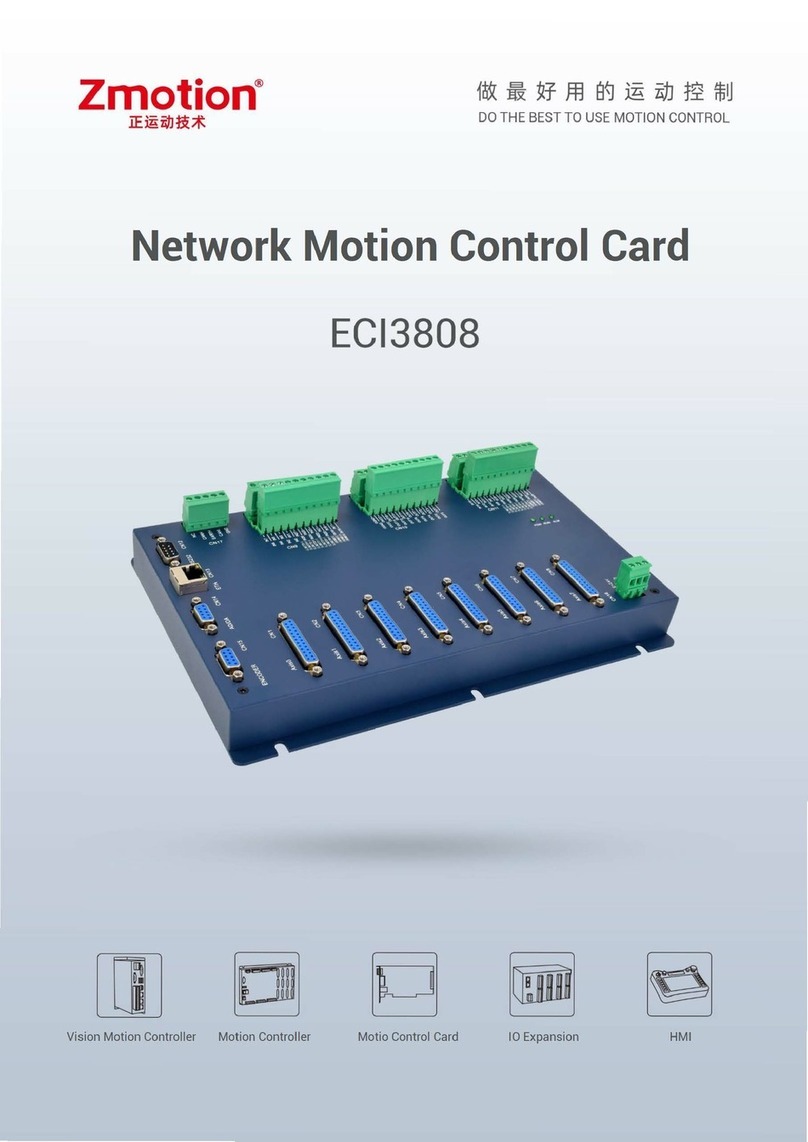ECI2410 Network Motion Control Card Hardware Manual Version1.4
3
Content
ECI2410 Network Motion Control Card Hardware Manual ......................................................1
Chapter I Control Card Introduction ............................................................................................5
1.1 Connection Configuration.....................................................................................5
1.2 Installation and Programming .............................................................................6
1.3 Features...................................................................................................................7
Chapter II Hardware Description..................................................................................................8
2.1 ECI2410 Series Controller .....................................................................................8
2.1.1 Order Information...........................................................................................9
2.2 Wiring Reference ..................................................................................................10
2.2.1 Power / CAN Interface .................................................................................11
2.2.2 RS232 Interface ............................................................................................11
2.2.3 Ethernet Interface Signal.............................................................................12
2.2.4 Analog input and output signal..................................................................12
2.2.5 General Input signal.....................................................................................13
2.2.5.1 Digital Input Wiring Reference............................................................13
2.2.5.2 Digital Input Specification ..................................................................13
2.2.5.3 Digital Input Terminal ..........................................................................14
2.2.6 Digital Output Signal....................................................................................15
2.2.6.1 Digital Output Wiring Reference.........................................................15
2.2.6.2 Digital Output Specification................................................................16
2.2.6.3 Digital Output Terminal .......................................................................17
2.2.7 Handwheel Interface Signal........................................................................18
2.2.8 Axis Interface Signal....................................................................................20
2.2.8.1 Wiring Reference for Low-speed Differential Pulse and Encoder
Axis 22
2.2.8.2 Wiring reference for High-speed Differential Pulse or Encoder Axis
24
2.2.8.3 Wiring Reference for Encoder Axis ....................................................26
Chapter III Expansion Module ....................................................................................................27
3.1 Wiring Reference For CAN, Input, Output and Power......................................27
Chapter IV Common Problems...................................................................................................28
Chapter V Hardware Installation................................................................................................31
5.1 ECI2410 Installation.............................................................................................31































